
This word problem requires students to use fractions to solve it.
- Subject:
- Mathematics
- Material Type:
- Activity/Lab
- Provider:
- Illustrative Mathematics
- Provider Set:
- Illustrative Mathematics
- Author:
- Illustrative Mathematics
- Date Added:
- 05/01/2012

This word problem requires students to use fractions to solve it.
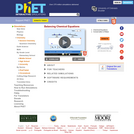
How do you know if a chemical equation is balanced? What can you change to balance an equation? Play a game to test your ideas!
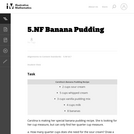
The purpose of this task is to provide students with a concrete situation they can model by dividing a whole number by a unit fraction.
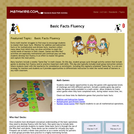
Every math teacher struggles to find ways to encourage students to master their basic facts. Whether for addition and subtraction facts or for multiplication and division facts, teachers collect many ideas from which they can draw activities to meet the varied needs of learners in their classes. Games and Who Has? activities are especially motivational and continual play can help students develop fact fluency in an effort to master the games and capture the most points.
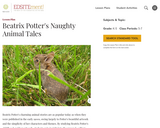
Through studying Beatrix Potter's stories and illustrations from the early 1900s and learning about her childhood in Victorian England, students can compare/contrast these with their own world to understand why Potter wrote such simple stories and why she wrote about animals rather than people.

This exemplar text is designed to give students the opportunity to use the reading and writing habits they’ve been practicing on a regular basis to absorb deep lessons from Kate DiCamillo’s story. By reading and rereading the passage closely and focusing their reading through a series of questions and discussion about the text, students will identify how and why the three main characters became friends.
* This text is extracted from a close reading exemplar produced and published by Student Achievement Partners

Because of Winn-Dixie by Kate DiCamillo, Instructional Exemplar (Day 1)
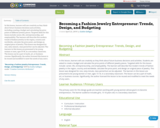
In this lesson, learners will use creativity as they think about future business decisions and activities, including creating a budget and calculating the price points of different jewelry pieces. Targeted skills for this lesson include career, life, entrepreneurship, and employability. The learners will describe five modern trends of fashion jewelry in the region, country and worldwide, calculate the price point, and design an original piece of jewelry. This lesson was designed for one, sixty-minute, class period but can be adjusted. The learners in this lesson are presumed to be young women or men, ages 15-18, in a secondary classroom. The lesson can be a part of math, art, or business courses. Significantly, the author licensed this lesson to be reused and modified to meet the needs of any users.

This video segment describes how the Australopithecus afarensis skeleton known as Lucy could have been fossilized. Footage courtesy of NOVA: "In Search of Human Origins."
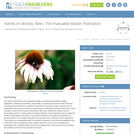
The study of biomimicry and sustainable design promises great benefits in design applications, offering cost-effective, resourceful, non-polluting avenues for new enterprise. An important final caveat for students to understand is that once copied, species are not expendable. Biomimicry is intended to help people by identifying natural functions from which to pattern human-driven services. Biomimicry was never intended to replace species. Ecosystems remain in critical need of ongoing protection and biodiversity must be preserved for the overall health of the planet. This activity addresses the negative ramifications of species decline. For example, pollinators such as bees are a vital work force in agriculture. They perform an irreplaceable task in ensuring the harvest of most fruit and vegetable crops. In the face of the unexplained colony collapse disorder, we are only now beginning to understand how invaluable these insects are in keeping food costs down and even making the existence of these foods possible for humans.
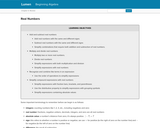
Real Numbers

This course is also intended to provide the student with a strong foundation for intermediate algebra and beyond. Upon successful completion of this course, you will be able to: simplify and solve linear equations and expressions including problems with absolute values and applications; solve linear inequalities; find equations of lines; and solve application problems; add, subtract, multiply, and divide various types of polynomials; factor polynomials, and simplify square roots; evaluate, simplify, multiply, divide, add, and subtract rational expressions, and solve basic applications of rational expressions. This free course may be completed online at any time. It has been developed through a partnership with the Washington State Board for Community and Technical Colleges; the Saylor Foundation has modified some WSBCTC materials. (Mathematics 001)
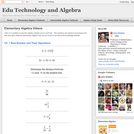
Visually searchable database of Algebra 1 videos. Click on a problem and watch the solution on YouTube. Copy and paste this material into your CMS. Videos accompany the open Elementary Algebra textbook published by Flat World Knowledge.
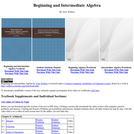
Beginning and Intermediate Algebra by Tyler Wallace is a textbook licensed under a Creative Commons Attribution 3.0 Unported License. There is also a student guide and supplemental videos for each section.
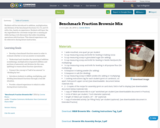
Students will be introduced to addition, multiplication, and division of the benchmark fractions 1/2, 1/3, and 1/4 with a fun, hands-on experience. Students will layer the dry ingredients for a brownie recipe into a canning jar while having a rich discussion that aides visualizing operations with fractions. This shared experience can be referred to during future instruction.

Bianca visits a bike shop and learns how bicycle gears work in this Cyberchase video segment.
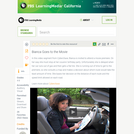
This Cyberchase video segment features Bianca, who must figure out the fastest route to a movie premiere.
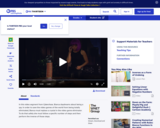
This video segment from Cyberchase introduces the idea of inverse operations as Bianca imagines herself as a spy.
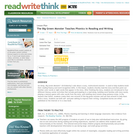
Go Away, Big Green Monster! Ed Emberley's tale about a scary, multicolored monster is used to help students build their reading fluency and word recognition skills. In this lesson, students chorally read the story and then point out familiar color words or sight words that appear in the story. After finishing the story, students are introduced to four different literacy center activities that include participating in a read along, building word families with story words, playing a memory game with color words from the story, and retelling story events using sentence strips. In the sessions that follow, students create their own artwork of the big green monster and use that artwork to help them write a story. Students use both self- and peer-editing to improve their writing. Completed stories are either published on the Internet or in a class book.
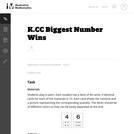
In this card game students play in pairs to practice recognizing the biggest number.